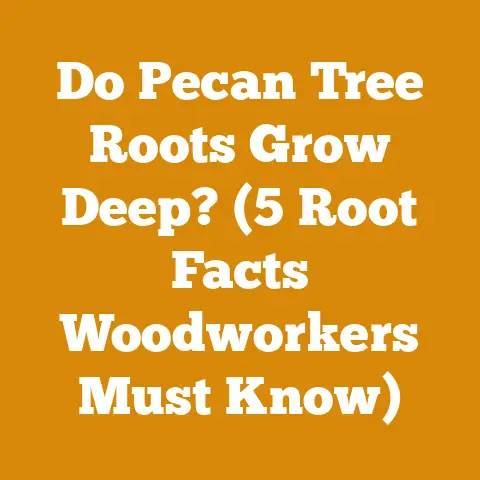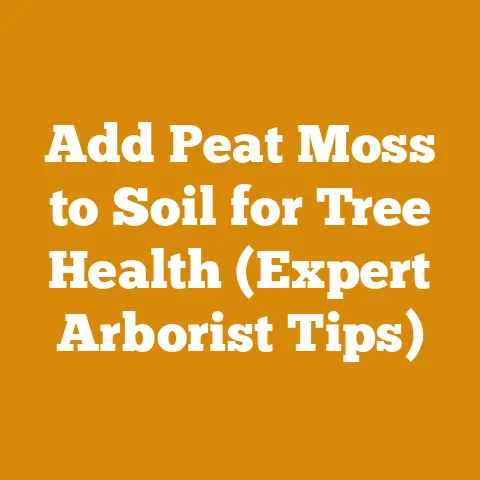Wood Stove Top Plate Uses Explained (Pro Tips for Firewood Cooking)
Would you rather heat your home with a wood stove and never worry about skyrocketing utility bills, or be completely reliant on the grid, vulnerable to power outages and price hikes? If you’re leaning towards the wood stove, then understanding how to maximize its potential is key – and that’s where the top plate comes in.
Wood Stove Top Plate Uses Explained (Pro Tips for Firewood Cooking)
As someone who’s spent countless hours tending wood stoves, both for heating and cooking, I can tell you that the top plate is more than just a flat surface. It’s a versatile tool that can transform your wood stove from a simple heat source into a surprisingly effective cooking appliance. Let’s dive deep into the uses of a wood stove top plate and how to get the most out of it.
What is a Wood Stove Top Plate?
The top plate, or cooktop, is the flat, horizontal surface on the top of a wood stove. It’s typically made of cast iron or steel, designed to withstand high temperatures. The purpose of this surface is to transfer heat from the firebox to pots, pans, and other cookware, allowing you to cook food using the stove.
Benefits of Using a Wood Stove Top Plate
Using a wood stove top plate offers several advantages:
- Energy Efficiency: You’re already burning wood for heat, so using the top plate for cooking utilizes that energy more efficiently.
- Off-Grid Cooking: In case of a power outage, your wood stove becomes a reliable cooking source.
- Cost Savings: Reduce your reliance on electric or gas stoves, saving money on utility bills.
- Unique Flavor: Some believe that cooking on a wood stove imparts a unique, smoky flavor to food.
- Warm and Cozy Atmosphere: The heat from the stove creates a comfortable and inviting kitchen environment.
Understanding Heat Distribution on the Top Plate
One of the most crucial aspects of cooking on a wood stove is understanding how heat is distributed across the top plate. The area directly above the firebox will be the hottest, while the areas further away will be cooler. This creates different heat zones that you can use for various cooking tasks.
- Hottest Zone (Directly Above Firebox): Ideal for boiling, searing, and high-heat cooking.
- Medium Zone (Adjacent to Hottest Zone): Suitable for simmering, sautéing, and frying.
- Coolest Zone (Furthest from Firebox): Perfect for keeping food warm or gently heating sauces.
Choosing the Right Cookware for Your Wood Stove
The type of cookware you use can significantly impact your cooking results. Here’s what I’ve learned over the years:
- Cast Iron: My go-to choice. Cast iron distributes heat evenly and retains it well, making it ideal for searing, frying, and baking. Plus, it’s incredibly durable.
- Steel: Heats up quickly but can be prone to hot spots. Good for boiling water or making soups.
- Enamelware: Attractive and easy to clean, but can chip if not handled carefully.
- Avoid: Non-stick cookware. The high heat of a wood stove can damage the non-stick coating.
Essential Tools for Wood Stove Cooking
Having the right tools on hand will make wood stove cooking much easier and more enjoyable. Here are some essentials:
- Oven Thermometer: Place inside the stove to monitor the internal temperature.
- Infrared Thermometer: Quickly check the temperature of the top plate and cookware.
- Long Tongs: For safely moving pots and pans.
- Heat-Resistant Gloves: Protect your hands from burns.
- Cast Iron Lifter: For lifting heavy cast iron cookware.
- Stove Top Kettle: For boiling water for tea or coffee.
Mastering Fire Management for Consistent Cooking
Consistent heat is crucial for successful wood stove cooking. Here are some tips for managing your fire:
- Use Seasoned Wood: Dry wood burns hotter and more efficiently. I aim for a moisture content of 15-20%.
- Maintain a Steady Fire: Add small amounts of wood frequently to keep the fire burning consistently.
- Control Airflow: Adjust the air vents to regulate the fire’s intensity.
- Experiment with Wood Types: Different wood types burn at different rates and temperatures. Hardwoods like oak and maple burn hotter and longer than softwoods like pine.
Basic Cooking Techniques on a Wood Stove
Let’s explore some basic cooking techniques you can use on your wood stove top plate:
- Boiling: Place a pot of water directly over the hottest zone. Monitor closely and adjust the fire as needed.
- Simmering: Move the pot to a cooler zone and reduce the fire to maintain a gentle simmer.
- Sautéing: Use a cast iron skillet and place it over a medium-heat zone. Add oil and sauté your ingredients as usual.
- Frying: Similar to sautéing, but use more oil and maintain a higher temperature.
- Baking: This is where an oven thermometer comes in handy. Preheat the stove to the desired temperature and bake your dish as you would in a conventional oven.
Simple Recipes to Get You Started
Here are a couple of simple recipes to get you started with wood stove cooking:
1. Wood Stove Top Oatmeal:
- Ingredients: 1 cup rolled oats, 2 cups water, pinch of salt.
- Instructions: Combine all ingredients in a pot. Place on the hottest zone and bring to a boil. Reduce heat and simmer for 15-20 minutes, or until the oats are cooked to your liking.
- Pro Tip: Add dried fruit, nuts, or a drizzle of maple syrup for extra flavor.
2. Wood Stove Top Chili:
- Ingredients: 1 lb ground beef, 1 onion (chopped), 2 cloves garlic (minced), 1 can (15 oz) diced tomatoes, 1 can (15 oz) kidney beans (drained and rinsed), 1 packet chili seasoning.
- Instructions: Brown the ground beef in a cast iron pot on a medium-heat zone. Add onion and garlic and sauté until softened. Stir in diced tomatoes, kidney beans, and chili seasoning. Bring to a simmer, then move to a cooler zone and cook for at least 30 minutes, or longer for deeper flavor.
- Pro Tip: Add a tablespoon of cocoa powder for a richer, more complex flavor.
Advanced Wood Stove Cooking Techniques
Once you’ve mastered the basics, you can move on to more advanced techniques:
- Dutch Oven Cooking: A Dutch oven is a heavy, lidded pot that can be used for baking, roasting, and stewing. It’s perfect for cooking on a wood stove because it distributes heat evenly and retains moisture.
- Using a Griddle: A cast iron griddle can be placed on the top plate for making pancakes, grilled cheese sandwiches, and other griddle favorites.
- Slow Cooking: The low, consistent heat of a wood stove is ideal for slow cooking. Place a pot of stew or soup on a cooler zone and let it simmer for hours.
Safety Precautions When Cooking on a Wood Stove
Safety should always be your top priority when cooking on a wood stove. Here are some precautions to keep in mind:
- Never leave the stove unattended while cooking.
- Keep flammable materials away from the stove.
- Use heat-resistant gloves and long tongs to avoid burns.
- Ensure proper ventilation to prevent carbon monoxide poisoning.
- Install a carbon monoxide detector in your home.
- Clean up spills immediately to prevent accidents.
Cleaning and Maintaining Your Wood Stove Top Plate
Regular cleaning and maintenance will keep your wood stove top plate in good condition and prolong its lifespan.
- Clean the top plate after each use. Use a scraper or wire brush to remove any food residue or ash.
- Season the top plate regularly. This will help prevent rust and create a non-stick surface. To season, apply a thin layer of cooking oil to the top plate and heat it until the oil starts to smoke. Repeat this process several times.
- Inspect the top plate for cracks or damage. If you notice any problems, contact a qualified stove technician for repairs.
Troubleshooting Common Issues
Here are some common issues you might encounter when cooking on a wood stove and how to troubleshoot them:
- Food is burning: Reduce the heat by adjusting the airflow or moving the pot to a cooler zone.
- Food is not cooking evenly: Make sure your cookware is distributing heat evenly. Cast iron is generally the best choice.
- The stove is smoking: Ensure that the chimney is clean and that the wood is dry.
- The stove is not getting hot enough: Use dry, seasoned wood and ensure that the airflow is not restricted.
Wood Selection for Cooking
The type of wood you burn affects the heat output and the flavor of your food.
- Hardwoods (Oak, Maple, Ash): Burn hotter and longer, providing consistent heat for cooking.
- Fruitwoods (Apple, Cherry): Impart a subtle, sweet flavor to food.
- Softwoods (Pine, Fir): Burn quickly and produce a lot of smoke, so they’re not ideal for cooking.
Measuring Moisture Content in Firewood
The moisture content of your firewood is crucial for efficient burning. Here’s how to measure it:
- Moisture Meter: A handheld device that measures the moisture content of wood. I aim for a moisture content of 15-20% for optimal burning.
- Visual Inspection: Dry wood will be lighter in color and have cracks on the ends.
- Sound Test: Dry wood will make a hollow sound when struck against another piece of wood.
Wood Drying Techniques
Properly drying your firewood is essential for efficient burning and cooking. Here are some techniques:
- Stacking: Stack the wood in a single row, allowing air to circulate freely.
- Elevating: Elevate the wood off the ground to prevent moisture from wicking up.
- Covering: Cover the top of the stack to protect the wood from rain and snow, but leave the sides open for ventilation.
- Time: Allow the wood to dry for at least six months, or longer in humid climates.
Sustainable Wood Sourcing
When sourcing firewood, it’s important to choose sustainable options:
- Local Sources: Purchase wood from local suppliers who practice sustainable forestry.
- Salvaged Wood: Use fallen trees or branches from your property.
- Avoid Endangered Species: Do not use wood from endangered tree species.
- Responsible Harvesting: Ensure that the wood is harvested responsibly and does not contribute to deforestation.
Legal Considerations for Firewood
Be aware of any legal restrictions on firewood in your area:
- Firewood Bans: Some areas have bans on transporting firewood to prevent the spread of invasive species.
- Permits: You may need a permit to harvest wood from public lands.
- Local Regulations: Check with your local authorities for any specific regulations on firewood.
The Future of Wood Stove Cooking
Wood stove cooking is experiencing a resurgence in popularity as people seek more sustainable and self-sufficient lifestyles. With advancements in stove technology and cooking techniques, wood stoves are becoming increasingly versatile and efficient cooking appliances.
Case Study: A Week of Wood Stove Cooking
To illustrate the practicality of wood stove cooking, I once challenged myself to cook all my meals on my wood stove for a week. Here’s what I learned:
- Planning is Key: I had to plan my meals in advance and gather all the necessary ingredients.
- Temperature Control is Crucial: Mastering temperature control was essential for preventing food from burning or undercooking.
- Flexibility is Important: I had to be flexible and adjust my cooking times based on the fire’s intensity.
- It’s Rewarding: Despite the challenges, I found wood stove cooking to be incredibly rewarding. The food tasted delicious, and I felt a sense of accomplishment from using a traditional cooking method.
Common Mistakes to Avoid
Here are some common mistakes to avoid when cooking on a wood stove:
- Using Unseasoned Wood: This will result in a smoky fire and inefficient burning.
- Overfilling the Stove: This can create excessive heat and damage the stove.
- Leaving the Stove Unattended: This is a safety hazard and can lead to accidents.
- Using the Wrong Cookware: Non-stick cookware can be damaged by the high heat of a wood stove.
- Ignoring Safety Precautions: Always prioritize safety when cooking on a wood stove.
The Psychology of Wood Stove Cooking
There’s something deeply satisfying about cooking on a wood stove. It connects us to our ancestors who relied on wood fires for warmth and sustenance. The process of building a fire, tending to the flames, and cooking food with wood is a mindful and grounding experience.
Integrating Wood Stove Cooking into Your Lifestyle
Incorporating wood stove cooking into your lifestyle can be a gradual process. Start with simple recipes and gradually work your way up to more complex dishes. Don’t be afraid to experiment and learn from your mistakes. With practice, you’ll become a skilled wood stove cook and enjoy the many benefits of this traditional cooking method.
Wood Stove Cooking and Emergency Preparedness
In an emergency situation, your wood stove can be a lifeline. It provides a reliable source of heat and cooking, even when the power is out. Make sure you have a supply of firewood on hand and know how to operate your stove safely.
Optimizing Your Wood Stove Setup for Cooking
To optimize your wood stove setup for cooking, consider the following:
- Stove Placement: Place the stove in a well-ventilated area with easy access to firewood.
- Chimney Height: Ensure that the chimney is tall enough to provide adequate draft.
- Stove Accessories: Invest in essential accessories like an oven thermometer, long tongs, and heat-resistant gloves.
- Surface Protection: Place a heat-resistant mat under the stove to protect the floor.
Wood Stove Cooking Communities and Resources
Connect with other wood stove enthusiasts and learn from their experiences. Here are some resources to check out:
- Online Forums: Join online forums dedicated to wood stove cooking.
- Social Media Groups: Follow social media groups for tips, recipes, and inspiration.
- Local Workshops: Attend workshops on wood stove cooking and maintenance.
- Books and Cookbooks: Read books and cookbooks on wood stove cooking.
Adding a Water Reservoir to Your Wood Stove
Some wood stoves come with a built-in water reservoir, or you can add one separately. This allows you to heat water for washing, cleaning, or making tea and coffee. It’s a convenient and efficient way to utilize the heat from your stove.
Wood Stove Cooking vs. Outdoor Fire Pit Cooking
While both wood stove cooking and outdoor fire pit cooking offer similar benefits, there are some key differences:
- Control: Wood stoves offer more precise temperature control than outdoor fire pits.
- Weather: Wood stoves can be used in all weather conditions, while outdoor fire pits are limited by the weather.
- Convenience: Wood stoves are generally more convenient to use than outdoor fire pits.
- Smoke: Wood stoves produce less smoke than outdoor fire pits.
Enhancing Your Wood Stove with Accessories
Accessorizing your wood stove can enhance its functionality and aesthetics. Here are some popular accessories:
- Stove Top Fan: Circulates heat more efficiently.
- Decorative Trivets: Protect the top plate and add a touch of style.
- Wood Storage Racks: Keep your firewood organized and accessible.
- Fireplace Tools: Essential for tending to the fire.
Understanding BTU Output and Cooking
BTU (British Thermal Unit) measures the heat output of your wood stove. A higher BTU rating means more heat, which can be beneficial for cooking. However, it’s important to control the fire’s intensity to avoid burning your food.
The Art of Dutch Oven Cooking on a Wood Stove
Dutch oven cooking on a wood stove is a true art form. The even heat distribution and moisture retention of a Dutch oven make it perfect for baking bread, roasting meats, and making stews. Experiment with different recipes and techniques to master this skill.
Cooking Bread on a Wood Stove: A Step-by-Step Guide
Baking bread on a wood stove can be challenging, but the results are worth it. Here’s a step-by-step guide:
- Preheat the Stove: Preheat the stove to the desired temperature, using an oven thermometer to monitor the heat.
- Prepare the Dough: Prepare your bread dough according to your favorite recipe.
- Place in Dutch Oven: Place the dough in a Dutch oven and cover with the lid.
- Bake: Place the Dutch oven on the top plate and bake for the recommended time, rotating the pot occasionally to ensure even cooking.
- Check for Doneness: Check for doneness by inserting a toothpick into the center of the bread. If it comes out clean, the bread is done.
- Cool: Let the bread cool slightly before slicing and serving.
Cooking with Kids on a Wood Stove
Cooking with kids on a wood stove can be a fun and educational experience. Teach them about fire safety, wood selection, and basic cooking techniques. Supervise them closely and make sure they understand the dangers of the stove.
Wood Stove Cooking and Sustainability
Wood stove cooking can be a sustainable practice if done responsibly. By using sustainably sourced firewood and managing your fire efficiently, you can reduce your carbon footprint and contribute to a more sustainable lifestyle.
Exploring Global Wood Stove Cooking Traditions
Wood stove cooking is a global tradition with unique variations in different cultures. From Scandinavian wood-fired ovens to Russian pechkas, wood stoves have been used for centuries to cook delicious and nutritious meals. Explore these traditions and learn from the culinary wisdom of other cultures.
Wood Stove Cooking for Camping and Outdoor Adventures
Wood stoves are also popular for camping and outdoor adventures. Portable wood stoves are lightweight and easy to transport, making them ideal for cooking in the wilderness. Make sure you follow all safety precautions and leave no trace behind.
Wood Stove Cooking and Food Preservation
Wood stoves can also be used for food preservation techniques like smoking and drying. Smoking food imparts a unique flavor and helps preserve it for longer periods. Drying food removes moisture and prevents spoilage.
The Future of Wood-Fired Cooking
The future of wood-fired cooking is bright. As people become more interested in sustainable and traditional cooking methods, wood stoves will continue to play a vital role in our kitchens and communities. By embracing wood stove cooking, we can connect with our past, nourish our bodies, and create a more sustainable future.
So, are you ready to embrace the warmth and versatility of wood stove cooking? With a little practice and patience, you’ll be creating delicious meals and enjoying the many benefits of this timeless cooking method. Happy cooking!






